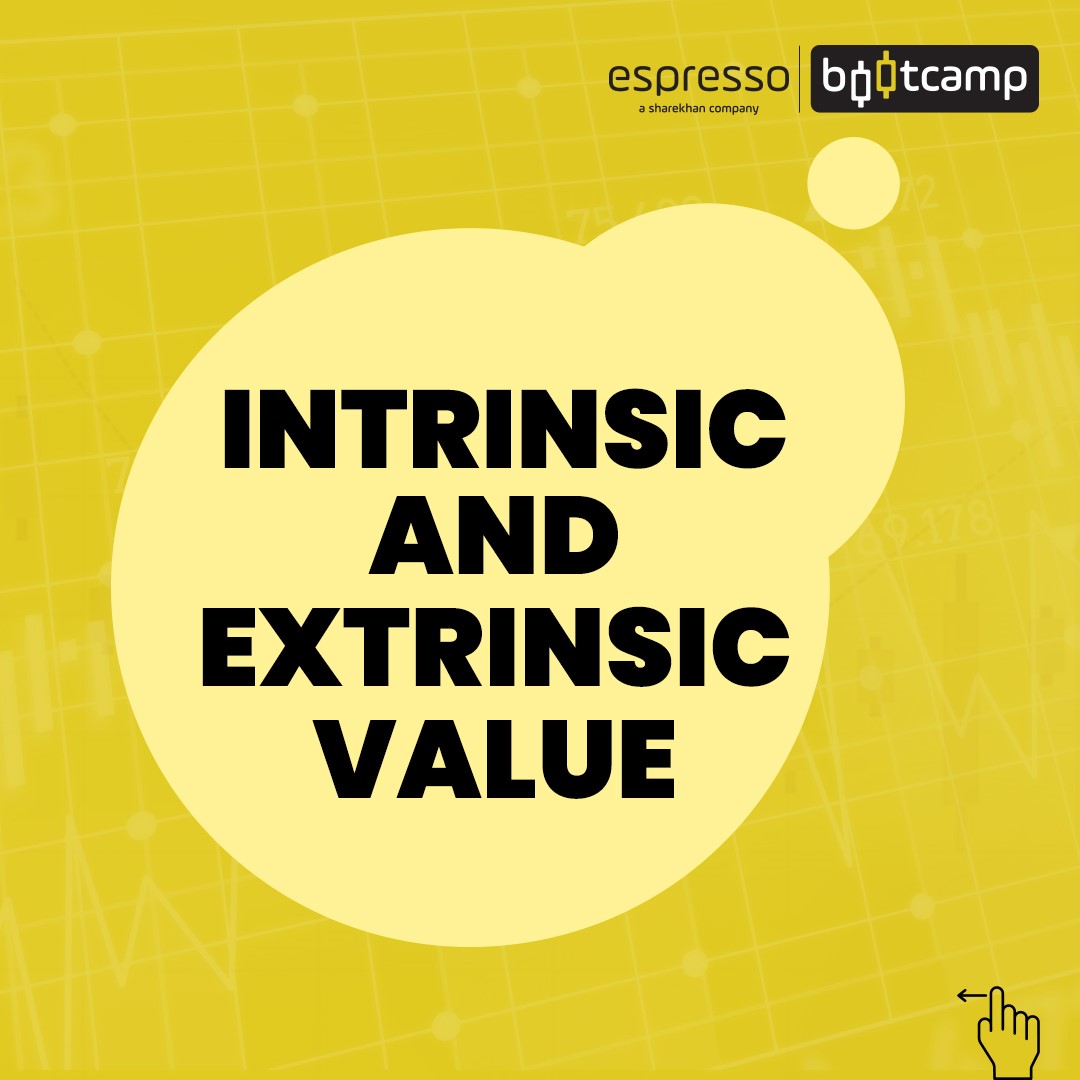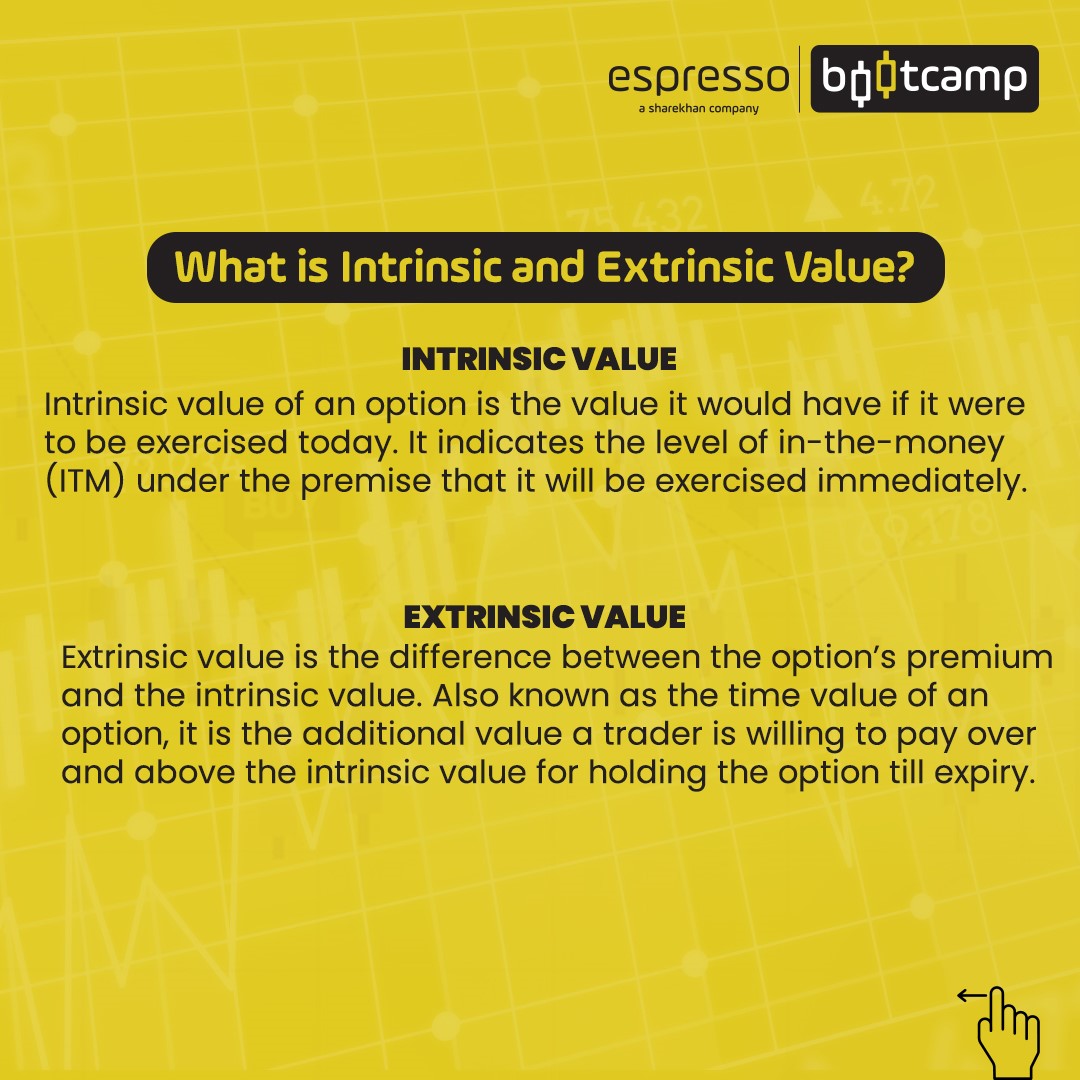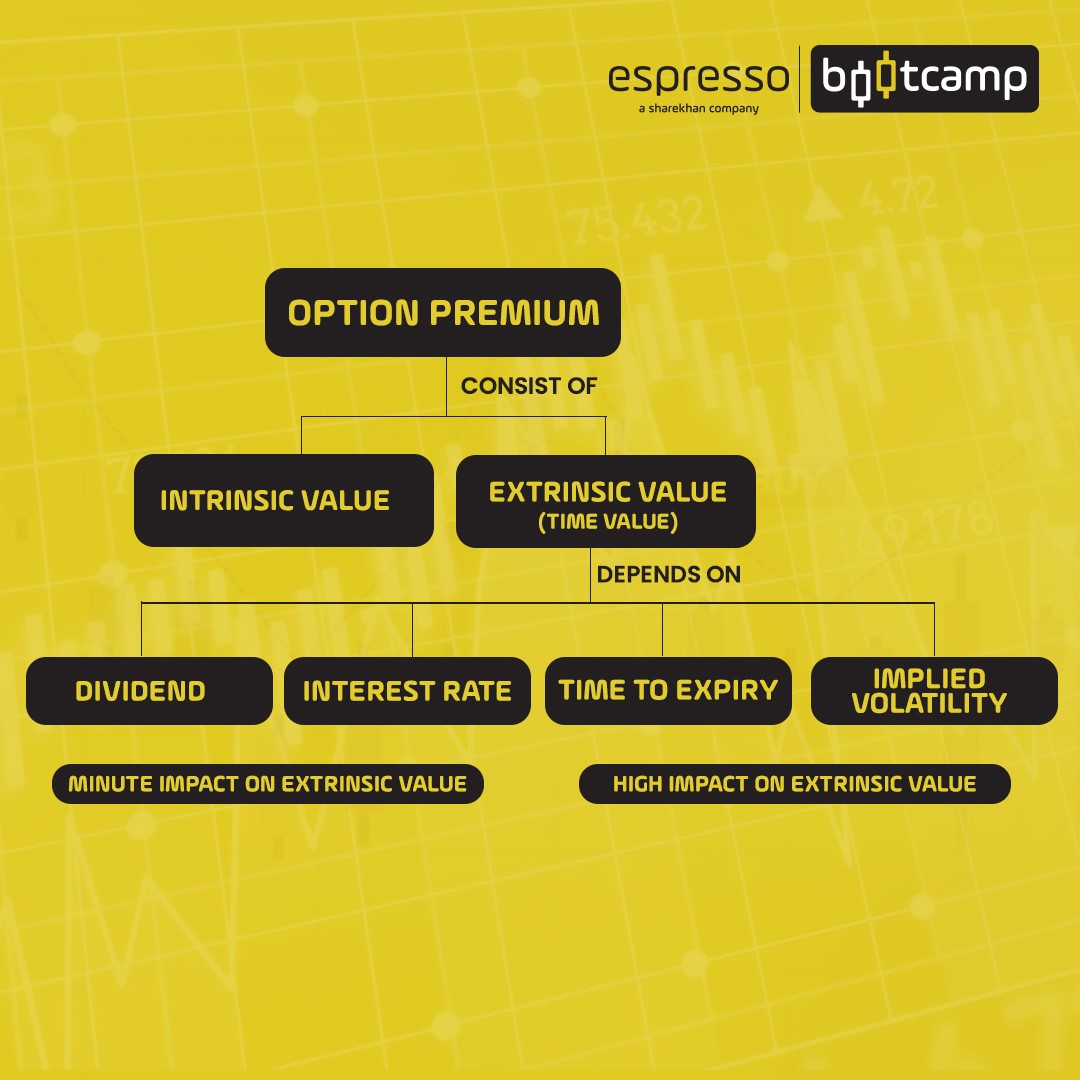One of the most significant instruments on the market, across all asset classes, may be options. Understanding how options are priced becomes crucial for options traders. The premium that an option holder pays to an option seller to transfer his risk is known as the option price. The most widely used model for the calculation of option pricing is the Black-Scholes model.
Without getting too technical, we shall go into the model's specifics here. But first, let's talk about two key ideas that go into determining an option's fair price: intrinsic value and extrinsic value. These two values are added to determine any option price.



The intrinsic value of options
The correlation between an asset's current market value and the option's strike price is known as intrinsic value. In simple words, this indicates the level of in-the-money (ITM) under the premise that it will be exercised right away. Therefore, it is just the difference between the asset's market price and the option's strike price. One must remember; nevertheless, that intrinsic value cannot be zero. The intrinsic values for both call and put are different for a particular strike price. Let us understand the intrinsic value of a call and put option.
The intrinsic value of a call option
The right but not the obligation to purchase is referred to as a call option. When the bias is bullish, one buys with the expectation that the price will go up. Therefore, the difference between the market price and the strike price is the intrinsic value of a call option. The strike price should be lower than the current market price for buying calls for a positive pay-off. The spot price minus the strike price will be the intrinsic value of a call option. The intrinsic value cannot be zero as buying higher and selling lower doesn’t make sense here. The following table will make this clear. The strike prices of 17,350 and 17,300 have a positive pay-off.
| Spot | 17382 | 17382 | 17382 | 17382 | 17382 |
| Strike | 17500 | 17450 | 17400 | 17350 | 17300 |
| Spot-Strike | -118 | -68 | -18 | 32 | 82 |
| Intrinsic value | 0 | 0 | 0 | 32 | 82 |
The intrinsic value of a put option
The right but not the obligation to sell is referred to as a put option. When the bias is bearish, one sells with the expectation that the price will go down. Therefore, the difference between the strike price and the market price is the intrinsic value of a put option. The strike price should be higher than the current market price for buying puts for a positive pay-off. The strike price minus the market price will be the intrinsic value of a put option. The intrinsic value cannot be zero, as selling lower and buying higher doesn’t make sense here. The following table will make this clear.
| Spot | 17382 | 17382 | 17382 | 17382 | 17382 |
| Strike | 17500 | 17450 | 17400 | 17350 | 17300 |
| Strike-spot | 118 | 68 | 18 | -32 | -82 |
| Intrinsic value | 118 | 68 | 18 | 0 | 0 |
Extrinsic value or time value of options
Extrinsic value, also known as the time value of an option, is the difference between the premium of an option and the intrinsic value. It is the additional value a trader is willing to pay over and above the intrinsic value for holding the option till expiry. This is because an option value has a greater chance of increasing or decreasing until expiry. More the time for expiration greater the possibility of an increase or decrease in value and vice-versa. Extrinsic value also rises as volatility increases. Volatility implies risk, and prices are subject to risk till the life of an option. Therefore, the higher the volatility and longer the expiry, the higher the extrinsic value. However, extrinsic value loses value as expiry approaches and becomes worthless on expiry.
Extrinsic or time value of a call and put option
The extrinsic value of a call option is the difference between the premium and the intrinsic value. The tables below show the extrinsic value for various strike prices of call and put options.
Calculation of extrinsic value of a call option
| Spot | 17382 | 17382 | 17382 | 17382 | 17382 |
| Strike | 17500 | 17450 | 17400 | 17350 | 17300 |
| Spot-Strike | -118 | -68 | -18 | 32 | 82 |
| Intrinsic value | 0 | 0 | 0 | 32 | 82 |
| Premium | 107 | 127 | 150 | 175 | 202 |
| Extrinsic value | 107 | 127 | 150 | 143 | 120 |
Calculation of extrinsic value of a call option
| Spot | 17382 | 17382 | 17382 | 17382 | 17382 |
| Strike | 17500 | 17450 | 17400 | 17350 | 17300 |
| Strike-spot | 118 | 68 | 18 | -32 | -82 |
| Intrinsic value | 118 | 68 | 18 | 0 | 0 |
| Premium | 252 | 227 | 200 | 173 | 148 |
| Extrinsic value | 134 | 159 | 182 | 173 | 148 |
Importance of intrinsic and time value in option trading
It is critical to know the intrinsic and extrinsic value of an option before beginning options trading. It is good to comprehend what an option buyer is paying for by using the intrinsic value and time value of an option. If an option buyer buys an out-of-the-money (OTM) or at-the-money (ATM) option, then it is most likely to expire worthless as the market price is equal to the strike price and there is no intrinsic value. However, the chance that it will become ITM is also possible due to the time of expiration. This is why it's critical to comprehend the time value as a component of an option's premium.
But on the other hand, if he buys an ITM option, there is less risk of an option expiring worthless. However, since the risk of expiring worthless would be less, the premium is higher, and consequently, the percentage return will be lower. This is not the case when buying OTM options. When an OTM option moves to ITM, then the percentage gain would be quite large. This may happen only if there is a longer time to expiry and a large price move.
Things to remember
- The premium that an option holder pays to an option seller to transfer his risk is known as the option price.
- The most widely used model for pricing calculation is the Black-Scholes model.
- The two key aspects that go into determining an option's fair price are intrinsic value and extrinsic value. These two values are added to determine any option price.
- The correlation between an asset's current market value and the option's strike price is the intrinsic value.
- Extrinsic value, also known as the time value of an option, is the difference between the premium of an option and the intrinsic value.
 0
|
0
|
 0
0
 Modules
Modules

 Watch
Watch 
